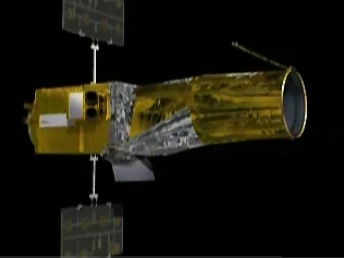
CNES (Centre National d’Etudes Spatiales), the French space agency, officially announced the end of of the CoRoT (Convection Rotation et Transits planétaires) spacecraft’s mission, which had among its purposes the search for exoplanets. In fact, the probe stopped transmitting data after a failure in November 2012 but in the months after several attempts to restore communications were made.
The CoRoT spacecraft was launched on December 27, 2006 on a Soyuz 2.1b/Fregat rocket from the Baikonur Cosmodrome in Kazakhstan and was placed in a circular polar orbit. The name of the probe is a tribute to the French painter Jean-Baptiste Camille Corot. The mission was run by CNES but it was a collaboration with ESA and with various nations.
One of the purposes of the CoRoT spacecraft was the search for exoplanets and in particular those of terrestrial with the transit method. Observations were looking for dips in the brightness of stars caused by planets passing in front of them using the probe’s 27 cm afocal telescope.
From this point of view, the Corot space probe was a pioneer of research. The more famous Kepler space telescope was launched by NASA on March 6, 2009, which is more than two years later. Kepler used the same method for the search for exoplanets although with a higher accuracy.
The other purpose of the mission CoRoT was the execution of asteroseismology measures. Their goal is to obtain information on the internal structure of the stars examining their oscillations due to their force of gravity, pressure and Coriolis force. Analizing the oscillations it’s possible to obtain information on their internal structure, age, size and chemical composition.
The primary mission of the CoRoT spacecraft lasted two and a half years and was subsequently extended until 31 March 2013. A fault in the Data Processing Unit #1 used for the processing of photometric data of one of the two of the probe’s photometric chains occurred on March 8, 2009 but the mission went ahead thanks to the Data Processing Unit #2.
The November 2012 failure was fatal to the CoRoT spacecraft’s mission. A year ago, CNES already gave up restoring communications so plans were set up to destroy it by lowering it into the atmosphere because engine control still works. CoRoT allowed the discovery of 32 exoplanets and the study of several stars and was the first probe to measure the size of a brown dwarf.
Despite its traumatic end, the experience of the CoRoT spacecraft has been very useful not only for its discoveries but also for planning future scientific missions. It wasn’t a particularly famous planet hunter but its legacy will be taken by the Plato spacecraft.
[ad name=”AmazonScience”]

